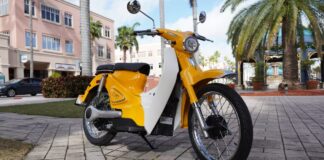






Rivian (RIVN) is learning from its past as it looks to turn its first profit. The cost of building its vehicles has “improved dramatically” as Rivian slashes costs on its path to profitability.
After establishing itself as a true luxury EV brand, Rivian is looking to control costs as it moves toward the next chapter.
Rivian delivered over 50,000 vehicles last year, more than doubling from 2022. The R1S was the fourth best-selling EV in the US through Q1 2024, behind only Tesla’s Model Y, Model 3, and the Ford Mustang Mach-E.
Meanwhile, Rivian delivered 13,588 vehicles in the first quarter, a slight decrease from the 13,972 handed over in Q4 2023.
Rivian expected deliveries to slall after announcing plans to shut down production at its Normal, IL plant last year. Rivians CEO and founder RJ Scaringe said during a recent fireside chat that the planned shutdown in April “introduced a dramatic cost reduction in material costs.”
Scaringe warned, “From an investor perspective, the second quarter’s going to be messy,” following a month-long shutdown.

Rivian looks past “messy” Q2 as it cuts costs
Although new supplier contracts and production upgrades will drastically lower Rivian’s bill of materials into 2025, we may not see much of the impact until Q3.
“We will deliver a very small percentage of these newer vehicles [in terms of cost] in Q2,” Scaringe explained, adding, “You won’t see a lot of those benefits until you get to Q3.”

These changes have been negotiated with suppliers over the past two years, so Rivian isn’t “hoping or wishing costs were lower.” Rivian also added hundreds of new robots, increasing the line rate by 30%.
The EV maker has eliminated 100 steps from battery making, 52 pieces of equipment from the body shop, and over 500 parts from the design of the R1T and R1S.

Scaringe told Reuters during a recent factory tour that the upgrade earlier this year resulted in a 35% cost reduction of materials for its vans. The new changes provide savings of a “similar magnitude” for its other vehicles.
Rivian’s cost of building vehicles has “improved dramatically,” Scaringe said. “The design of the parts and the design of the plant facilitate making the vehicle easier to build.”

The next chapter
Rivian’s gross vehicle margins have improved over the last year after it lost around $39,000 on each EV built in Q1 2024. That’s down from the +$67,300 loss in Q1 2023 but up slightly from the $32,594 and $30,500 losses in Q2 and Q3 2023, respectively.
| Q3 ’22 | Q4 ’22 | Q1 ’23 | Q2 ’23 | Q3 ’23 | Q4 ’23 | Q1 ’24 | |
| Rivian loss per vehicle | $139,277 | $124,162 | $67,329 | $32,594 | $30,500 | $43,372 | $38,784 |
The EV maker expects the cost savings to help it reach a positive gross margin by the end of the year. Rivian ended Q1 with just under $8 billion in cash and equivalents, which is enough to launch its smaller, more affordable R2 model.
Rivian expects R2 to greatly expand its market after the $45,000 electric SUV earned over 68,000 reservations in less than 24 hours.

The R2 will be built at its Normal plant starting in early 2026. Rivian initially planned to begin R2 production at its new GA facility, but the move helped save $2.25 billion while accelerating the launch.
Rivian’s R2 will account for 155,000 of the 215,000 future capacity at Rivian’s Normal plant. The plant’s current capacity is around 150,000 vehicles.
FTC: We use income earning auto affiliate links. More.
Source link
#Rivian #RIVN #drastically #cuts #costs #push #profit #ramps #expect




